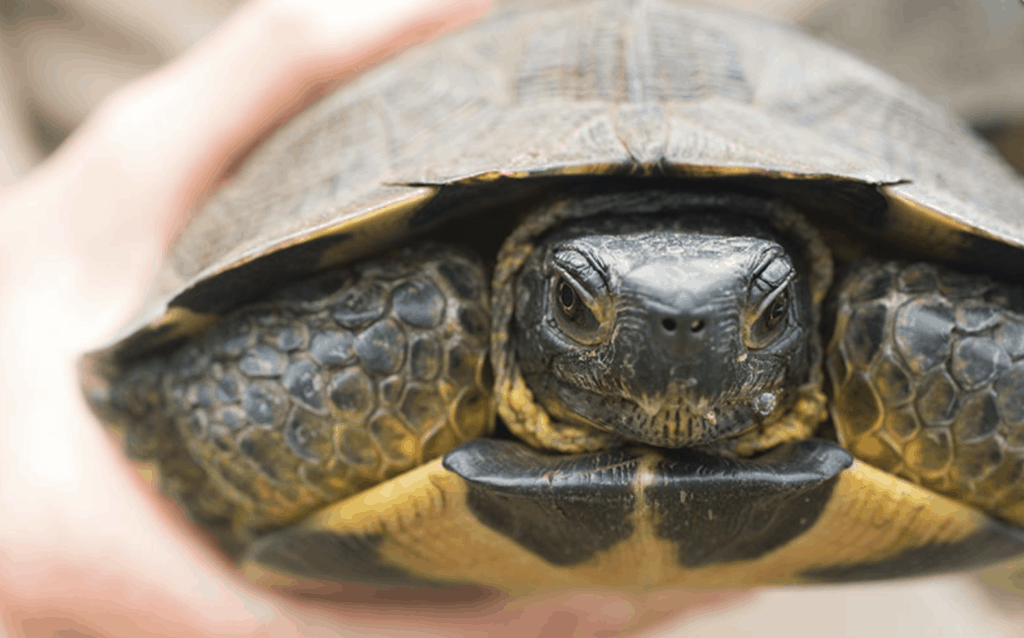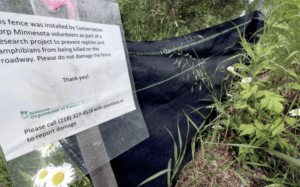Researchers scramble up river banks, edge along muddy shores, and step carefully through woods with eyes on the forest floor in Northeastern Minnesota. Their target: Wood Turtle (Glyptemys insculpta) and though slow, it takes a trained eye to see the perfectly camouflaged creatures.


Threats from all sides
The Minnesota Department of Natural Resources says that wood turtles are threatened by loss of nesting sites, predation, invasive species, poaching and road mortality. They are working to study and protect these vulnerable populations. Unlike the turtles you’ll find basking on sunny logs, this species prefers river banks near woodlands and foraging for earthworms and berries. The ridges in their shells are like tree rings – denoting age, and the yellow and black blotch pattern on their underbelly is said to be unique to each turtle, making identifying individuals possible.
Studying Populations, Working to Protect
Researchers from the Nongame Wildlife Program and University of Minnesota Duluth are using time-lapse cameras, motion detectors, as well as GPS radio tags, to track the actual health of the population. How many adults are there? How many juveniles? As a long-lived species (they’ve been known to survive into their fifties) overall population growth or decline can be difficult to track — and once in decline they are slow to recover.

Ron Moen from of the Natural Resources Research Institute at the University of Minnesota says, “With over 1,000 turtles marked since 1990, we can reconstruct the population over the past 30 years. The model shows that adult survival needs to be very high to maintain a stable population.” Find out more about their work in Minnesota Conservation Volunteer Magazine. The researchers are careful not to disclose the locations of where study is being conducted, saying that poaching remains a significant concern. The DNR, with help from the Minnesota Herpetological Society, is putting up fencing to keep turtles off roads and working to protect nests from predators and flooding – two major reasons eggs are lost.
Video:
MORE INFORMATION:
Turtles of the Forest – Minnesota Conservation Volunteer
Helpful facts about Minnesota Turtles and how to help turtles with road crossing >
DNR: Wood turtle surveys
Duluth News Tribune: Wood turtle researchers step in to help

